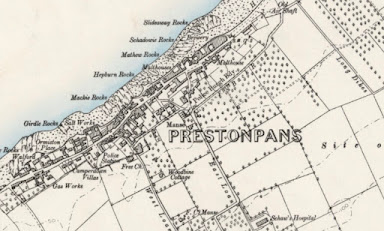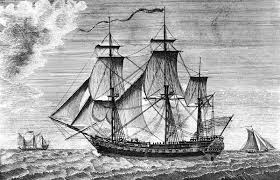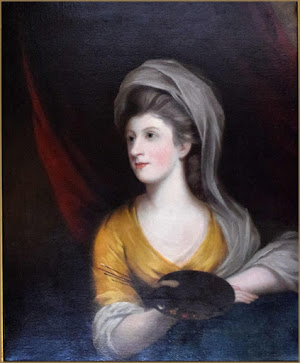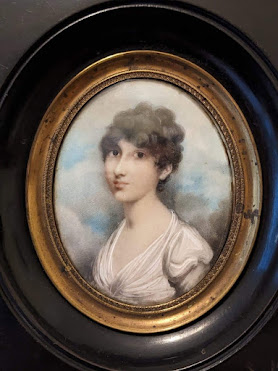A few years ago I was idling about on Ancestry and on an unexplained whim, decided to Google my grandfather's name. I was rather surprised to find the first site that came up was one called 'The Peerage'. The information listed with his name was all accurate; mother and father's names, father's occupation, and birth date. It was the citation that intrigued me;
'Marquis Ruvigny, Plantagenet Roll of the Blood Royal, being a complete table of all the descendants now living of Edward III, King of England: Essex Volume, page 256. Hereinafter cited as Plantagenet Roll of the Blood Royal: Essex.'
I was so perplexed by this finding I ended up emailing the site's owner to ask if I understood correctly, what I was reading. Was I making a wild generalisation based on what was included on his site, or was I correct in understanding that my grandfather, and therefore, myself as well, were descendants of Edward III? His reply was swift and emphatic; 'Yes he is a descendant- the link is through the Money family.'
I was already aware of the Money family; Maria Rowlanda Money was my 3x great grandmother, who had married Samuel James Gambier in 1830, at Hotel de Charost (the home of the British Ambassador to France) in Paris. But I hadn't yet spent much time researching them. I tentatively started clicking on my ancestors' names, and found my way through their maze, to finally find Edward III and his wife, Philippa of Hainault.
 |
| The Essex volume of The Plantagenet Roll of the Blood Royal follows the lineage from Isabel Plantagenet and Henry of Essex. |
Still in disbelief, I found myself wanting to see the information from the actual book by Melville Henry Massue, the genealogist who created the book cited on 'The Peerage' website. He created 5 volumes of 'The Plantagenet Roll of the Blood Royal', with the Essex volume (in which my grandfather's name appeared) following the lineage from Lady Isabel Plantagenet and her husband Henry, 1st Earl of Essex. Lady Isabel Plantagenet was the daughter of Richard Plantagenet, Earl of Cambridge, who was the grandson of Edward III, and Lady Anne Mortimer, who was the 2x great grand daughter of Edward III.
I found a copy fairly quickly, online, and was amazed to see information exactly as was cited online. Assuming that Melville Henry Massue used accurate records, I could claim descendency from Edward III!
 |
| Melville Henry Massue, 1911, assumed the identity of Marquis Ruvigny, in the writing of the Plantagenet Roll of the Blood Royal. |
Edward III was born on 13th November, 1312, at Windsor Castle, Berkshire, and succeeded to the throne on 25th January 1327, at the age of 14. His parents, Edward II and Isabella of France had a tumultuous life together, and in 1327 Isabella deposed her husband, with the help of her lover, Roger Mortimer. When Edward III succeeded the throne Isabella, and Mortimer acted as his regents, pretty much ruling the country as they wished. After 3 years of being effectively handcuffed by the power hungry Mortimer, Edward, with the help of some close friends, managed to overthrow his regents and took the throne as an independent and capable king, at the age of 17.
 |
| Mortimer seized by the King, from James Doyle, A Chronicle of England, 1864 |
I won't bother going into all the details of his reign; there are copious websites and books, movies and TV documentaries where all of that can be found. Suffice to say that Edward III was one of the longest reigning monarchs of England, keeping the throne for 50 years. He was a highly militarized king, and is noted by historians for his military successes. During his reign, Parliament changed substantially. The biggest change was the development of Parliament into the bicameral system we have today; of the House of Commons and the House of Lords. As part of this change the process of impeachment was developed, along with the position of the Speaker.
 |
| Sir Thomas Hungerford was the first Speaker of the House, in 1377. |
Edward Plantagenet married Philippa of Hainault in 1328 when he was about 16 years old and she was somewhere in her late teens or early 20s. Her father was William the Good, Count of Hainault in Holland, and her mother was Joan of Valois, the sister of Philip VI of France. Together Edward and Philippa had 13 children; Edward the Black Prince, Isabella Countess of Bedford, Joan, William of Hatfield, Lionel Duke of Clarence, John Duke of Lancaster, Edmund of Langley Duke of York, Blanche, Mary Duchess of Brittany, Margaret Countess of Pembroke, Thomas, William of Windsor, and Thomas Duke of Gloucester.
 |
| Lionel, Duke of Clarence, as he appears on the side of his father's tomb, was my 20x great grandfather. |
Despite their wealth, status, and power, their family were not immune to the Black Death, which was prevalent at the time, or the general health care norms of the day. Daughter Joan, who was betrothed to King Pedro of Castile, died of the plague before the marriage could take place, in her early teens. And likewise, their first son named Thomas died of the plague shortly after his first birthday. William of Hatfield died shortly after his birth and was buried at York Minster, and baby Blanche also died shortly after her birth, and was buried at Westminster Cathedral. The child considered to be the most important to the royal couple was, of course, their eldest son, and heir to the throne; Edward the Black Prince. Edward was a successful military man, like his father, and it was whilst he was fighting the Spanish campaign that he became ill. Some claim that he was poisoned, but it seems more likely that he suffered from the same diseases by which so many of his army were sickened. Edward lived for a further 9 years but he never fully recovered from this illness, finally succumbing in 1376. He was never to take the crown of England.
 |
| Edward the Black Prince, gained the nickname after his death, which may have referred to the black armour that he wore. |
Philippa, who had ruled the country at times during her life, while husband Edward III had been out of the country, fighting the Hundred Years War, died in 1369. She was given a state funeral in 1370, and was interred in Westminster Abbey.
Edward III died eight years later, and was placed next to her. Their tombs lie opposite his grandparents, Edward I and Eleanor of Castile, on the north east side of the Chapel of Edward the Confessor.
Edward's successor to the throne of England was his grandson, Richard Plantagenet, and son of Edward the Black Prince. He was to become Richard II, whose crown would come to be overthrown by Henry of Bolingbroke, sparking the Cousin's War, better known today as the War of the Roses.
 |
| Edward III was succeeded by his grandson Richard II, in 1377. |
**********************************
https://en.wikipedia.org/wiki/Melville_Henry_Massue
https://en.wikipedia.org/wiki/H%C3%B4tel_de_Charost
https://en.wikipedia.org/wiki/Philippa_of_Hainault#
https://en.wikipedia.org/wiki/Edward_the_Black_Prince
https://en.wikipedia.org/wiki/Joan_of_Valois,_Countess_of_Hainaut
https://en.wikipedia.org/wiki/William_I,_Count_of_Hainaut
https://en.wikipedia.org/wiki/Edward_III_of_England





















,_by_Isaac_Pocock.jpg)











